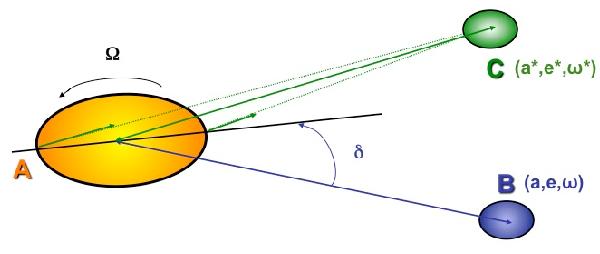Fig. 5

Here, we illustrate the set-up of the perturbing function method. The primary A is deformed because of the tides exerted by the perturber B. Because of A’s internal friction processes, the tidal bulge is shifted from the line of centers with the tidal angle δl given in Eq. (94) for a given l Fourier component of the tidal potential. The Keplerian elements of B’s orbit are a, e, and M. Next, a third body C, which orbits around A with a mean motion n∗, is introduced, and the variations in the Keplerian elements of its orbit (a∗,e∗,M∗) are derived. After using Lagrange’s equation (Eqs. (108), (109)), we finally assume that the orbiter and the perturber are the same (i.e. C = B).
Current usage metrics show cumulative count of Article Views (full-text article views including HTML views, PDF and ePub downloads, according to the available data) and Abstracts Views on Vision4Press platform.
Data correspond to usage on the plateform after 2015. The current usage metrics is available 48-96 hours after online publication and is updated daily on week days.
Initial download of the metrics may take a while.


